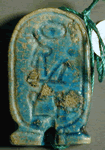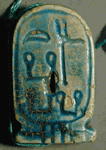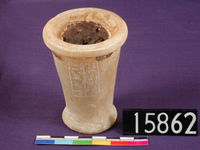(Maatkare + Weseretkau)



| Homepage | Timeline | Maps | A-Z index | Learning |
Hatshepsut (about 1479/1473-1458/57 BC)
Ruling queen of the Eighteenth Dynasty. She was the daughter of Thutmose I and a wife of Thutmose II, his son by another marriage. After the death of Thutmose II, his still very young son Thutmose III became king, but Hatshepsut seems to have taken over the task of government. Later she assumed a full royal titulary and ruled as king alongside her nephew. Hatshepsut is celebrated for her building activity across the whole country, especially in Thebes, where she had constructed a terraced mortuary temple, known today as Deir el-Bahari. The temple is well-known for the scenes showing the divine birth of the queen, and an expedition to the land of Punt (thought to be located at the southern end of the Red Sea). There is evidence for small campaigns against Nubia. After her death the name and the memory of the ruling queen were persecuted. Her image and her name were destroyed on many monuments. Her name does not appear in later king lists. However, this damnatiae memoria seems to have been not completely effective: she is mentioned as Amenses/Amense by Manetho, about 1200 years later.
| Horus name: Weseretkau Nebty name: Wadjrenput Golden Falcon name: Netjeretkhau Prenomen: Maatkare Nomen: Hatshepsut |
Burial place: Rock cut tomb in Thebes (Valley of the kings 20) |
Attestations in the Petrie Museum:
|
UC 11974
(Maatkare + Weseretkau) |
vessel with the name of the ruling queen; from Deir
el-Bahari
|
|
 |
 |
 |
Foundation deposit found at Hierakonpolis
Main buildings:
Further Attestations:
Mentions in inscription of private persons:
Bibliography:
Copyright © 2000 University College London. All rights reserved.